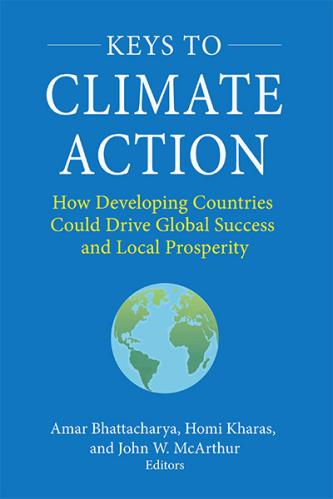Poverty, climate change, and the food crisis were at the forefront of the G8 Summit held in Hokkaido, Japan this week. Johannes Linn, Executive Director of the Wolfensohn Center for Development, assesses the G8 meeting outcomes and explores the implications of their commitments and other pending issues, including potential enlargement of the group.
Q. The G8 reaffirmed their commitment to the Gleneagles target for foreign aid and reaffirmed their commitment to the Millennium Development Goals. Is this enough, in your opinion, given current challenges in the world economy?
A. The fact that the G8 reaffirmed the target, and promised to monitor progress towards it, is encouraging. However, since progress so far has at best been mixed this is no guarantee that the target will be achieved in view of the economic and fiscal challenges many donor countries face and the fact that some of the relatively easy steps that pushed up the aid numbers in the recent past, especially debt relief, are no longer available. Moreover, as aid flows increase, the real challenge for donors and recipients will be to ensure their effective use in an increasingly fragmented, complex and volatile aid environment.
Q. The G8 agreed to halve emissions by 2050. Do you think this can be viewed as progress?
A. The fact that the US signed on to any target – or rather the “vision” of a target – represents progress, although it comes very late. The next president of the US can build on this new G8 consensus and move the important climate change agenda forward. But the obstacles remain formidable: first, the baseline for reductions was not spelled out by the G8 – is it 1990 or 2008 emissions? The former is what experts argue is necessary and will require more significant reductions than the latter. Second, interim targets need to be developed and agreed on. Third, major developing countries need to be brought into the fold. This may turn out to be the biggest hurdle, as the statement of G5 countries (Brazil, China, India, Mexico and South Africa) at this year’s G8 summit made clear.
Q. Regarding the global food crisis, G8 leaders encouraged countries to lift food export restrictions. In your view, how useful would this be? What other steps should be taken?
A. Lifting export restrictions would be helpful, especially as these tend to hurt the poorest neighbors of the food exporting countries. Kazakhstan, a major grain exporter, is a good example. Its export restrictions significantly increase prices and reduce food availability for its very poor neighbors, Kyrgyzstan and Tajikistan. However, much more important would be signals from the G8 countries that they are ready to overhaul their agricultural protection policies, especially those that impede the production of food in their own countries and in developing nations. Other measures, such as increased financial support for poor countries to assist them with emergency food imports, with the expansion of their food production and with income support schemes for the poorest, are essential. Fortunately, the World Bank is leading an effort in this direction. The G8 should have gone beyond its endorsement of this initiative by pledging new and incremental financial support for it over and above what they already have committed.
Q. There did not seem to be any discussion by the leaders of expanding G8 membership to include emerging powers. Do you think expansion would be appropriate and possible?
A. The G8 communiqué makes no reference to any discussion of expanding G8 membership, although it notes that progress is being made with implementation of the “Heiligendamm Process”. This is the initiative launched by the German G8 presidency in 2007 to organize, under the auspices of the OECD, a consultative forum of G8 and G5 members to deal with specific issues (such as development, energy, cross-border investment, etc.). However, this is not nearly enough to address the problems of legitimacy and effectiveness which the G8 faces. Without the full participation of major global players, especially the G5 and possibly a handful of others (e.g., a large Islamic country, such as Egypt or Indonesia and a large Middle Eastern oil exporter, such as Saudi Arabia), the G8 will not be able to effectively address the major global issues which it has regularly on its agenda: financial imbalances, trade, energy, climate change, epidemics, non-proliferation, terrorism, etc. Indeed, the assertive tone of the G5 statement at this year’s summit shows that the leaders of these countries are no longer willing to be passive bystanders. It would be better to have them inside the tent than creating a new divide. Fortunately, the tide seems to be turning on this issue, as some major G8 leaders, in particular President Sarkozy of France, are reported to have indicated on the sidelines of the summit their interest in expanding the G8. The next president of the United States could and should show early and decisive global leadership in making the case that it is in the interest of the G8 countries and of global peace and prosperity to create a more effective and representative global leadership forum. Until this happens, G8 summits will at best continue to meet the very low expectations that we now have for them. More likely, they will become increasingly irrelevant and leave a glaring and potentially disastrous gap in global leadership.
For more analysis on global governance reform and the expansion of the G8, see: Colin Bradford and Johannes Linn “
Global Economic Governance at a Crossroads: Replacing the G-7 with the G-20,” “Pragmatic Reform of Global Governance: Creating an L20 Summit Forum,” and “Reform of Global Governance: Priorities for Action.”



Commentary
What Did the G8 Summit Achieve? Progress or Stalemate
July 10, 2008